Gatherings with the Silent
Johanna Sulalampi attempts to understand the sonic world of lichens.
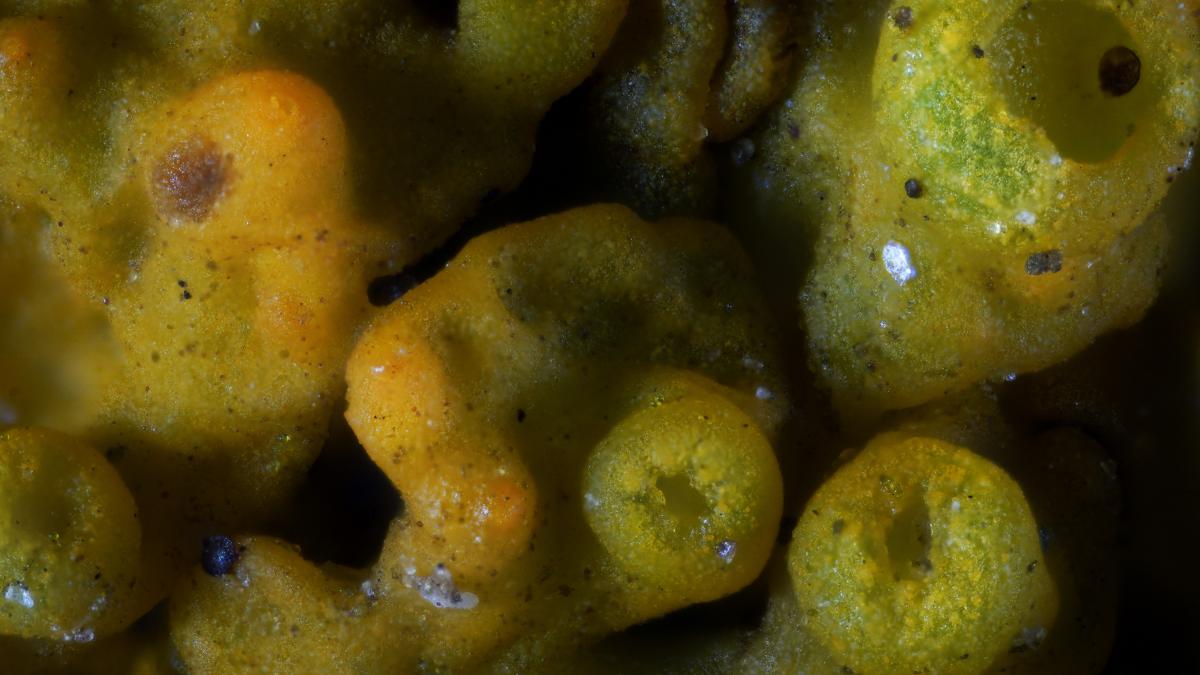
Johanna Sulalampi
Lichens were quiet when we met. And we were quiet together while the years passed. I did not know what diversity they were hiding. More than one species for every minute of a day just in this country. Knowing all the participants that constitute their visible body made their existence suddenly feel more than the sum of their parts. Fungi, algae, cyanobacteria, micro-organisms, insects, water, air, chemicals and more. It is the silent polyphonic assemblage. [1]
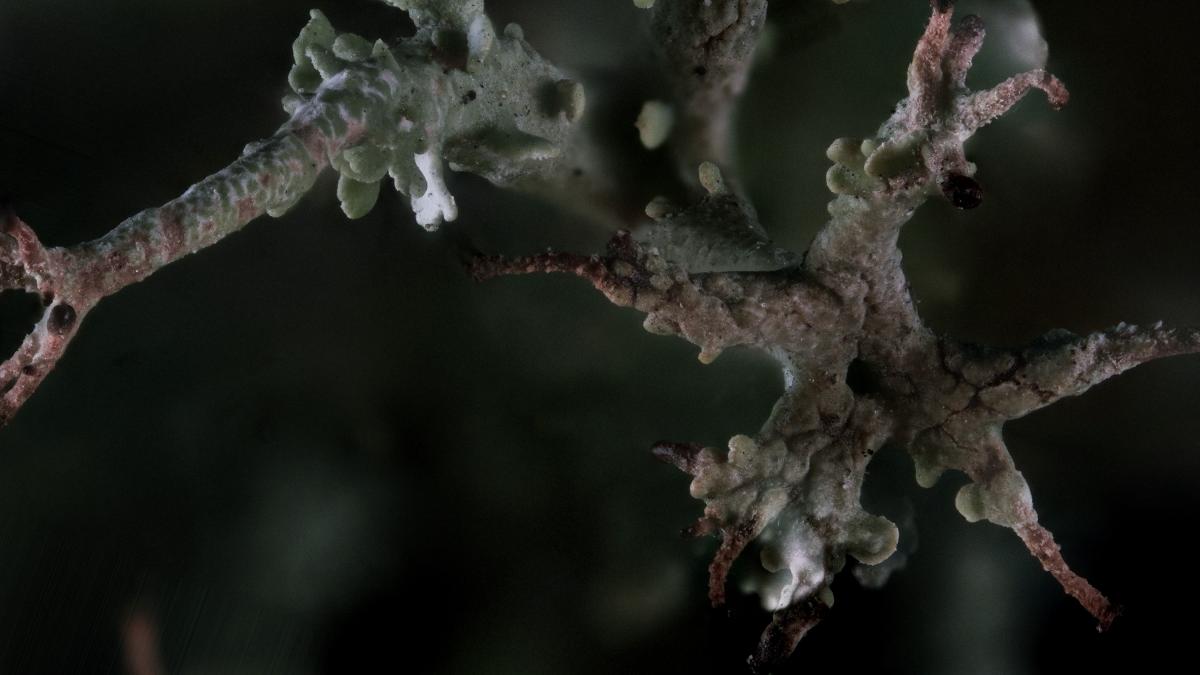
Despite us not having a common language, they got me following them in the wood trunks and branches repeatedly. Every afternoon we gathered at the rocks and stumps sharing a moment at their terrestrial coral reefs and kelp forests. I was truly interested about their history since it was repetitive in a quite different way and lacked a tone of self-sufficiency. I came to know that it was Rhizocarpon Geographicum and Xanthoria Elegans who travelled in space for 15 days. During that time, their metabolism ceased, but after returning to earth they recovered. I also heard that the fungi – algae relationship has developed several times over the course of evolution in different conditions, which is an indication that this collaboration is successful. [2] Listening to the history of lichens opened the possibility to challenge the false speciality of being a human. It took my thoughts towards the possibility of what being a lichen proposes. [3]
And I did my best to understand them. Unfortunately, at these gatherings with lichens it was mostly me staring at them with my eyes squinting (because I had lost my eyeglasses again) in whatever weird posture I had to take to see them in their habitat. I was trying not to stomp or harm them in any ways as I found out that the lichen we see is all it is. There are no mycelia or roots or other underground structures. The fungi’s skin is trying its best to protect the algae that is feeding them with sugar. Some of the lichens are fragile and growing back takes them a long time. The fastest growing lichens grows no more than a centimetre per year. During these gatherinngs I most certainly destroyed years’ forth of lichen communities by accident. Despite the slowness of their essence lichens grow all over the world, even in Antarctica. They can thrive on almost any surface: metal, desert soil and rocks. [4] Compared to humans, lichens do not break the ecosystems they inhabit.
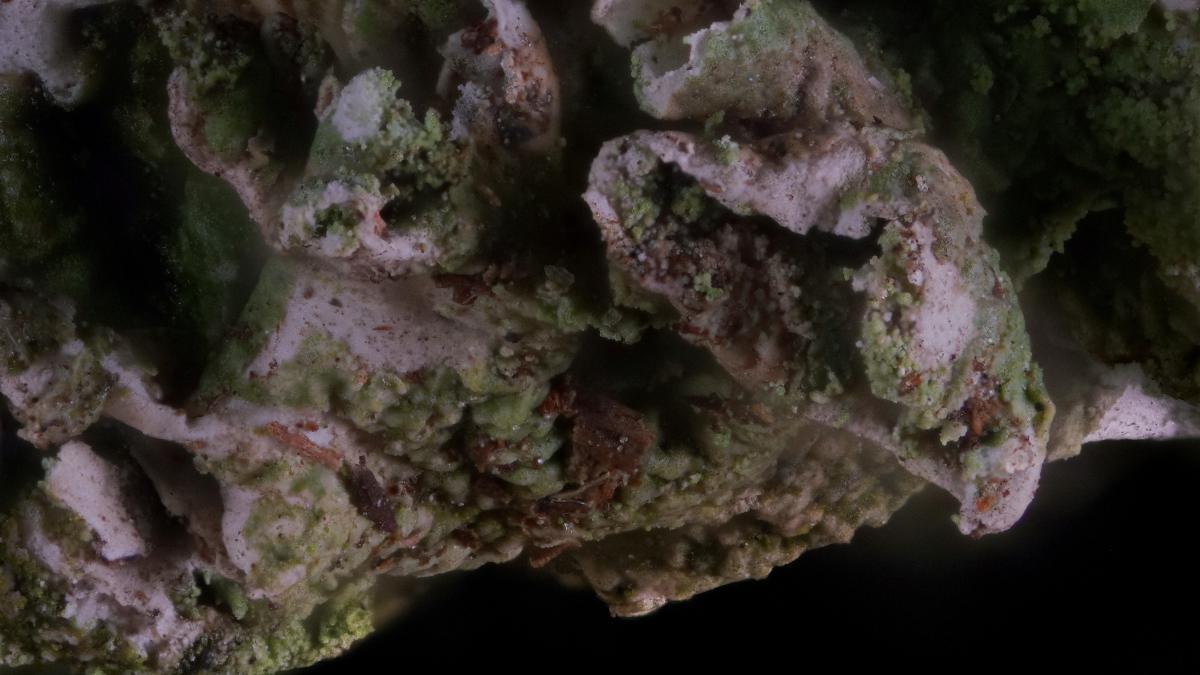
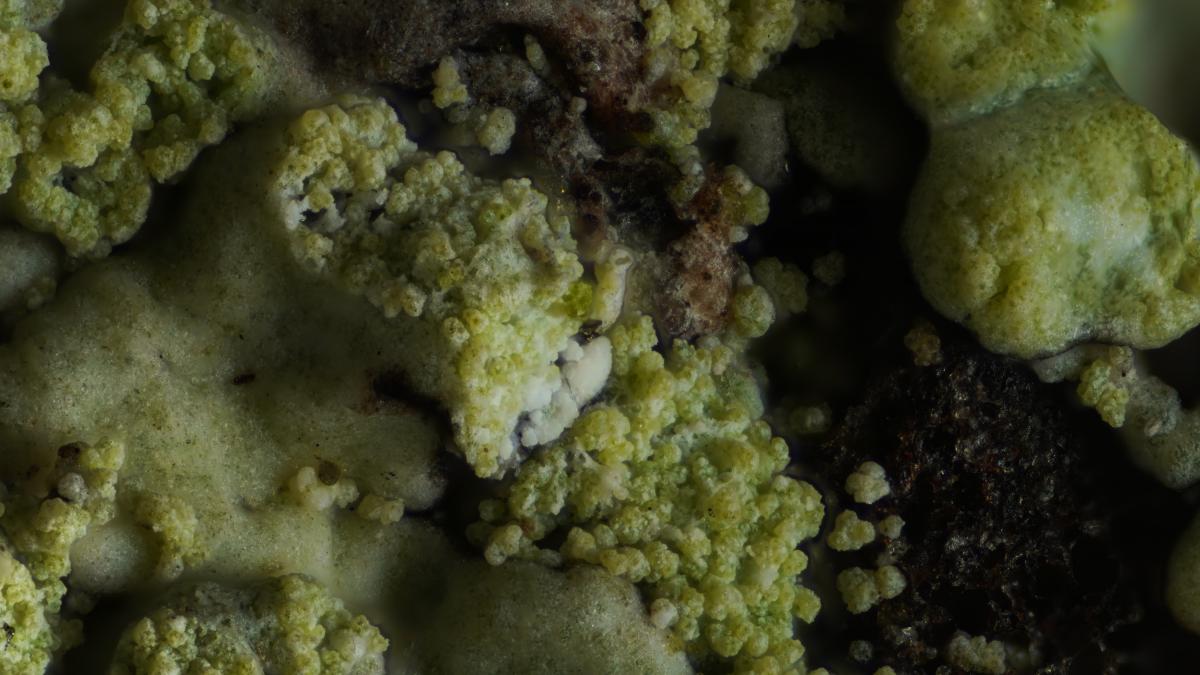
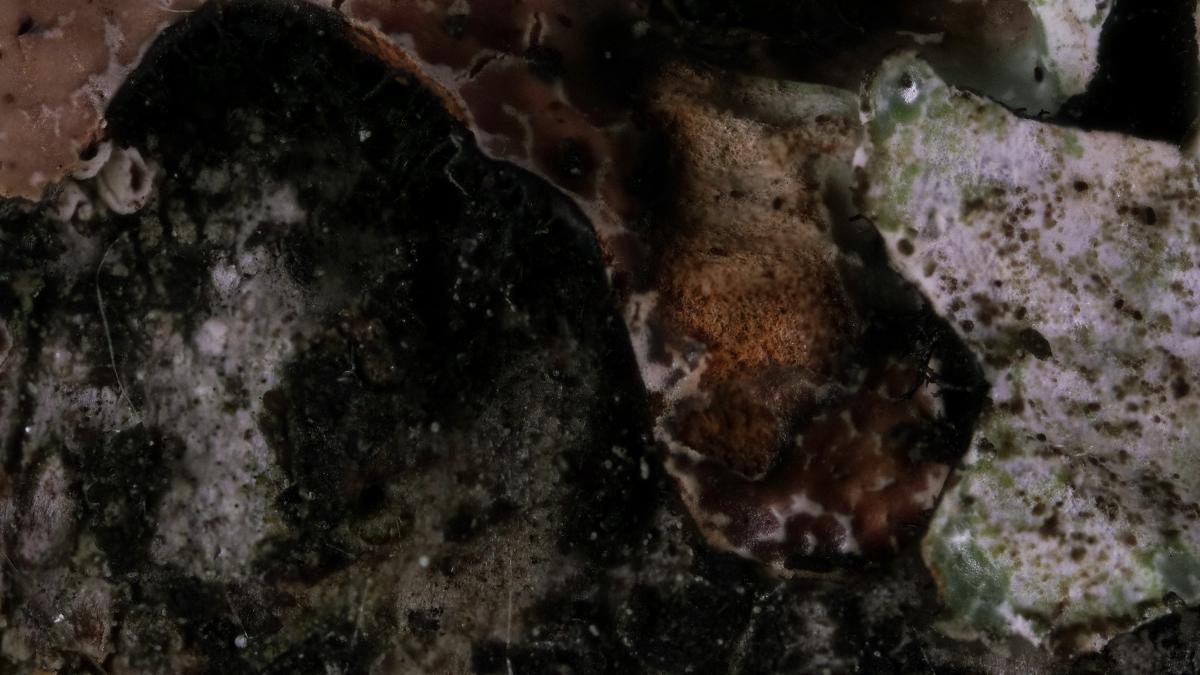
Contamination stage
Here I was with my awkward, watery human body surrounded by the colourful, silent diversity of lichens, mosses and micro-organisms. All of which this small suburban area had carried through the capitalist transformation, accidentally surviving between the human landscapes. The area is called a forest. But it is a forest in a sense of a third nature as professor of antrophology Anna Tsing proposes. The third nature refers to all of the species that have survived from the capitalism (so far). [5] Although most of the forests in Finland have gone through many serious traumas that have caused dissosiational breaks for the species, at the remains lichens create structures on beautiful tree stump castles, compositions on the rocks and great trapeze acts on the branches.
Lichens are active members of the area they inhabit and have great effects to the coexistence. They are sponges for absorbing nutrients, carbon and nitrogen, releasing it slowly to the terrain. They are nature’s own chemical indicators. [6]Unlike plants, lichens do not have a vascular system. Rather they absorb water and nutrients from air, rain, spray and humidity of the microclimate created by mosses. And they absorb everything in the water, including heavy metals. In dry seasons lichens go into dormant state that can last for more than 100 years. The recovery can happen in minutes after rehydration. [7] Even if I could not feel my part in lichen’s life I was part of it through the water, air and disturbances of the soil. And with our gatherings we had at the small suburban forest I had become contaminated by their history, beigness and physical body. And when I gave just a little space for them in my life I could see that they had changed me. [8] Now I understood that at the point where the elements meet there shoud be a lichen. And if there is not, concerns shoud arise. The watery body of lichen is a meeting point, a museum, a factory. But most of all it is an artwork.
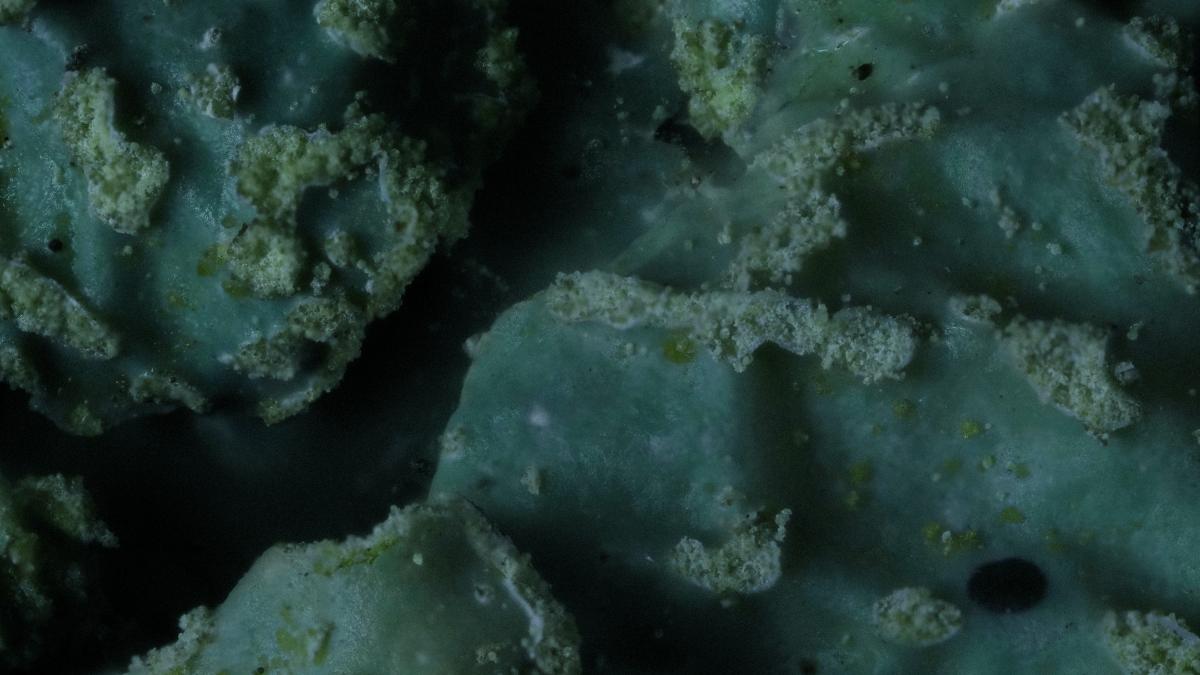
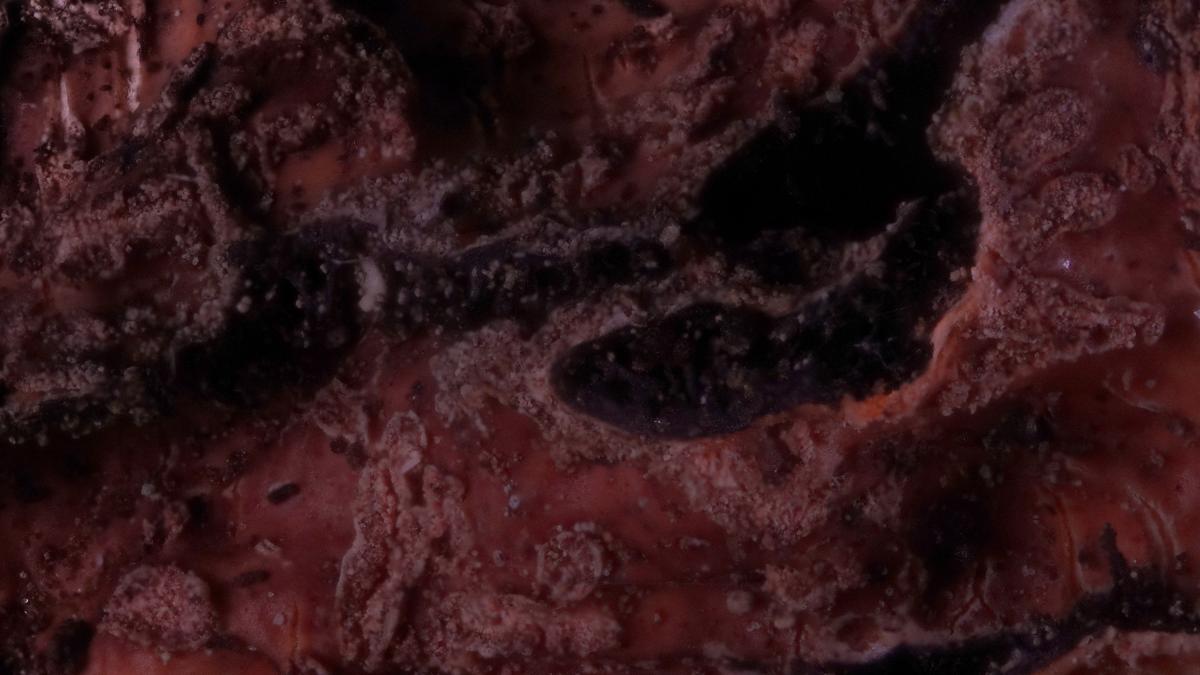

Voice of the inaudible
As a sound artist, how could I approach these creatures that had a significant artistic ability on their own? Working in collaboration through our differences is the essence of survival for all species. [9] Sonic fiction, on the other hand, is a way to engage with non-human beings and things. Fiction holds all the possibilities of sound in the incomplete, unfamiliar, unrecognizable and unheard. [10] It holds also the so-called inaudible like lichens.
The lichen world has a special tempo, colors (which intensities are humidity dependent), forms, textures and orientations that can be interpreted in sound, guided by the affects and emotions the spatial compositions, abilities to adapt, invisible interactions and gestures these sensible beings present. Sonification form scientific data, that could be drawn out from them, seems not to be where I am aiming for now.
Sound artist and receacher Salomé Voegelin’s writes how geography in sound has no cartography maps. Instead, it builds on encounters, lack of encounters and events between people and things developing in the area of invisible with rhythmsand textures. [11] What if I focus on sensing and imagining together with lichens and we create a future geography in sound? What does together mean in this context?
By wandering in the land of lichens I found that they have a bright, clear voice resonating through the environments they inhabit. It is a voice of co-existence, collaboration, re-inventing and indicating. I am imagining a time, a landscape, when human actions have faded, where the lichens have evolved to a point that their structures do make audible sounds. Their majestical pipes and horns are howling in dissonances in forests and deserts and the eart vibrates. Water streams flowing through their pits and holes rushing and roaring. Rain drops resonating in their bowls. Marvellous polyphonic composition of these symbiotic beings.
Notes
- Stenroos 2011, 13–15, 29–31 & Noell 2016, 111–114 & Tsing 2015, 23–24
- Stenroos 2011, 13–15, 29–31, 48–50 & Noell 2016, 111–114, 129–131
- Voegelin 2019, 108 & 113–114
- Stenroos 2011, 13 & Noell 2016, 111–114, 129
- Tsing 2015, viii.
- Noell 2016, 118–121
- Noell 2016, 114–115 & Stenroos 2011, 13–15, 29–31
- Tsing 2015, 27
- Tsing 2015, 28
- Voegelin 2019, 21, 35–38
- Voegelin 2019, 75
Works Cited
Noell, Nastassja. “Chapter 5: Radical Lichenology.” In Radical Mycology: A Treatise On Seeing and Working With Fungi. by Peter McCoy, Chthaeus Press (2016): 111-142.
Stenroos, Ahti, Lohtander, Myllys, eds. Suomen jäkäläopas. Luonnontieteellinen keskusmuseo, Helsingin yliopisto, 2011.
Tsing, Anna Lowenhaupt. The Mushroom at the end of the world: On the possibility of life in capitalist ruins. Princeton University Press, 2015.
Voegelin, Salomé. The Political Possibility of Sound: Fragments of Listening. New York: Bloomsbury Academic 2019.
All photos by Johanna Sulalampi (2022).
Ecological Thinking
This is the course blog for KDOC-24B20 – Ecological Thinking Seminar. In 2024-25, the seminar collaborates with Helsinki Biennial 2025 contextualizing its themes and curatorial vision with discourses and practices in the visual and performing arts. In 2023-24, we explored “Vertical Ecologies” by visual arts, film and performance, co-organized with Curator Giovanna Esposito Yussif of the Museum of Impossible Forms. Previously, in 2022-23, we organized a year-long collaborative research studio with Aarhus University, DK, Research Pavilion 2023 and Helsinki Biennial 2023 on the themes of environmental data, sensing and contamination.
Header image credit: Abelardo Gil-Fournier and Jussi Parikka / Seed, Image, Ground (2020)- With permission from the authors.
Latest posts
Follow blog